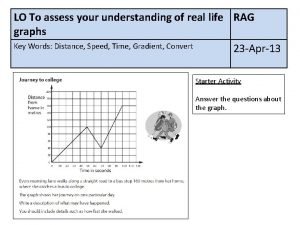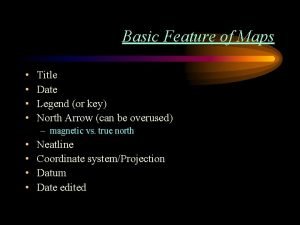Title Date To assess my understanding of sequences










- Slides: 10

Title Date To assess my understanding of sequences 26/12/2021 Starter Activity Complete the ‘Heard the Word Grid. ’ Are there any key words that you have learnt or have a better understanding of now than you did at the start of this unit of work?

Key Words / symbols Expression Term Simplify Substitute Equivalent Factorise Expand Never heard before? Heard of but not sure what it means? Know what it means and can explain it in context Jot down your ideas here. . .

1 Questions and Answers Problem Solving Fluency What are the next two terms (numbers) in these sequences? 4, 7, 10, 13, . . . , … , 30, 25, 20, 15, . . . , … , Draw the next pattern in this sequence Reasoning Sequence 1) 4, 7, 10, 13, . . . Sequence 2) 13, 10, 7, 4, … What is the same about these two sequences? What is different about these two sequences.

2 Questions and Answers Reasoning Problem Solving Fluency Describe this sequence in words, so that I would be able to write down the first five terms without seeing it …. . 7, 11, 15, 19 Write down the first five terms of this sequence… Start at 40 and subtract 4 True or False, the term to term rule for the sequence below is add 3? 3, 7, 11, 15… You must explain your answer.

3 Question Reasoning Problem Solving Fluency Write down the first 5 terms (numbers) in this sequence Answer 1 st term, 2 nd term, 3 rd term 4 th term 5 n What is the position to term rule (nth term rule) for this sequence? 7, 12, 17, 22, 27 Explain how you worked it out. What is the same and what is different about the sequences with these nth term rules. They are the same because………………. . ………………………………………. . . 2 n They are the different because……………. . ………………………………………. . . 2 n + 4

Problem Solving Fluency 4 Question What is the position to term rule (nth term rule) for this sequence? 20, 17, 14, 11, 8 What would the 20 th term in this sequence be? 7 n + 4 Explain how you worked it out. Reasoning Here are the first five terms of a number sequence. 3, 8, 13, 18, 23 Explain why 37 is not a term in this sequence. Answer

5 Question Reasoning Problem Solving Fluency What is the 10 th term in this sequence 1, 4, 9, 16, 25 The nth term of a sequence is 2 n 2 + 1 Write down the first 5 terms in the sequence. How is a quadratic sequence different from a linear sequence? Answer

Use the space below to set yourself a Use the space below to answer the question that question similar to the ones you have set yourself were able to answer confidently. My own question… My answer…

5 4 3 2 Sequences 1 I can draw the next two patterns in a simple sequence I can find a term to term rule for a linear sequence. I can work out the next two terms (numbers) in a sequence I can describe a sequence in words I can find the position to term rule for a linear sequence and explain how I worked it out. I can generate a sequence from a position to term rule. I can use a position to term rule to find any term in a sequence and also to decide whether a number is part of a sequence. I understand the difference between a linear sequence and a quadratic sequence.

My teachers probing question My answer What I will do to act upon my ‘Even Better If’’ comment Strategy Complete a mymaths lesson or booster pack Use a revision guide or text book Ask my teacher to explain during a lesson Ask a peer to explain during a lesson Ask someone at home to help Attend a revision session at school Attend homework club Something else (describe your strategy here) Tick / Comments



















